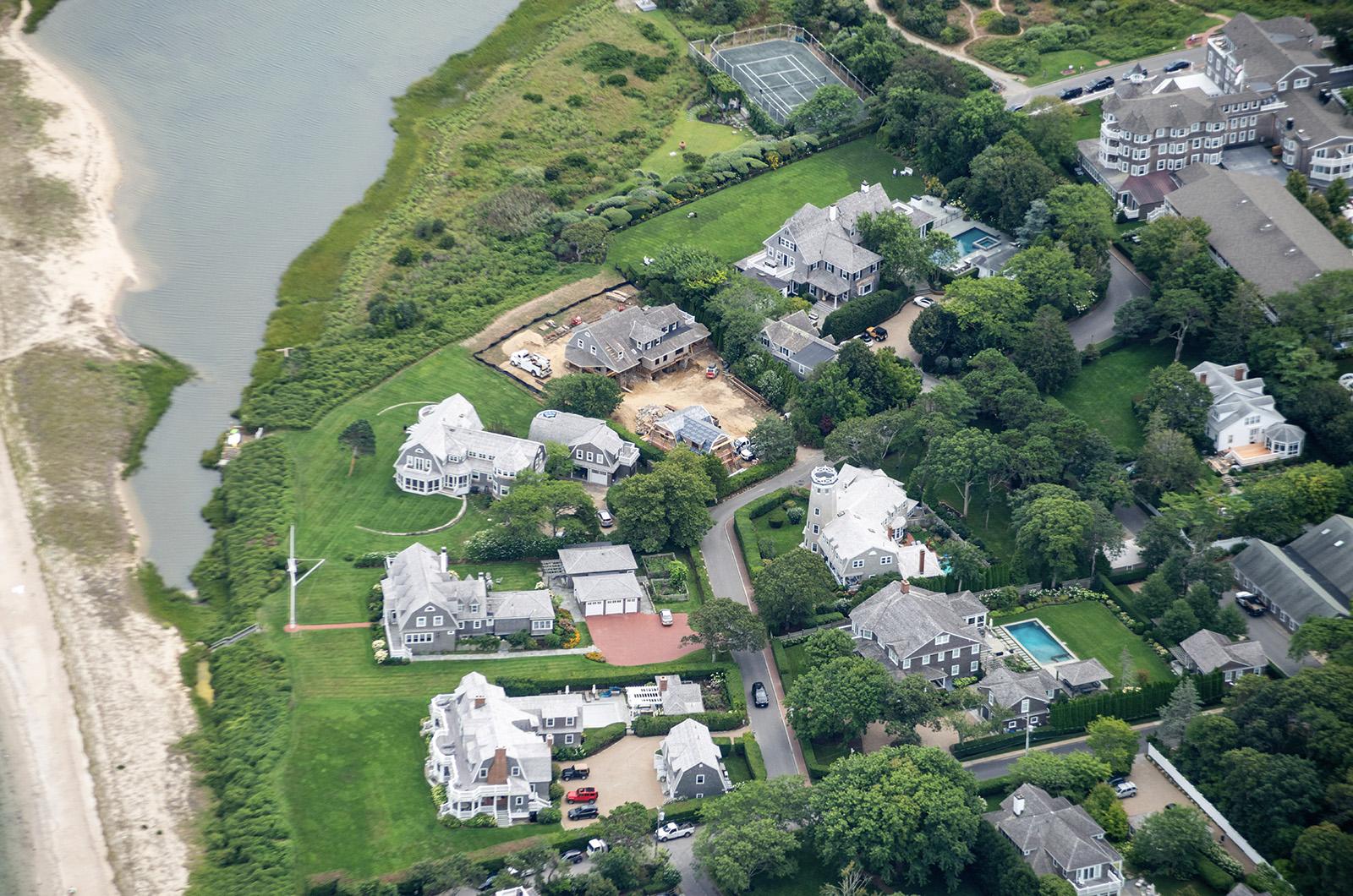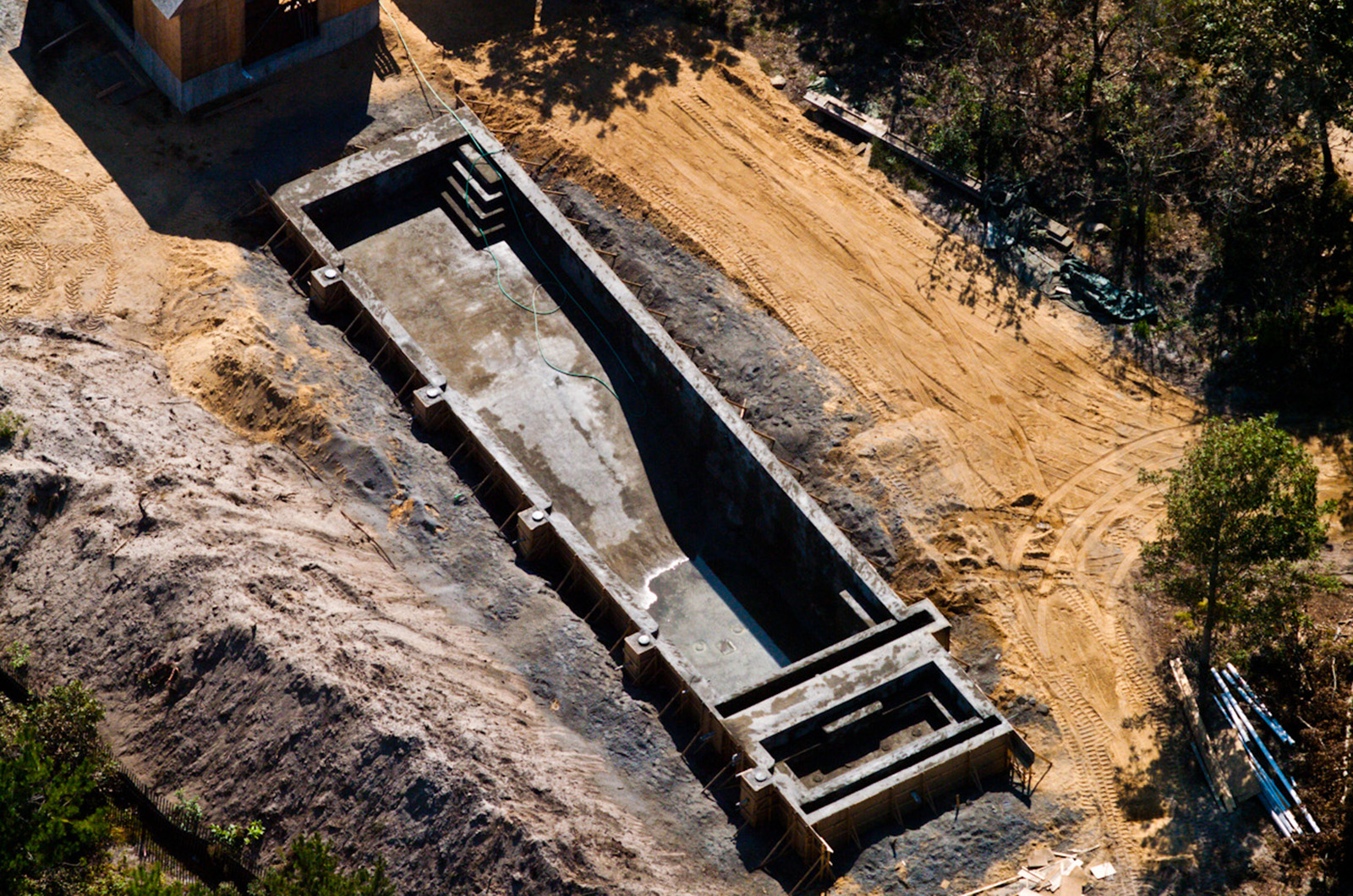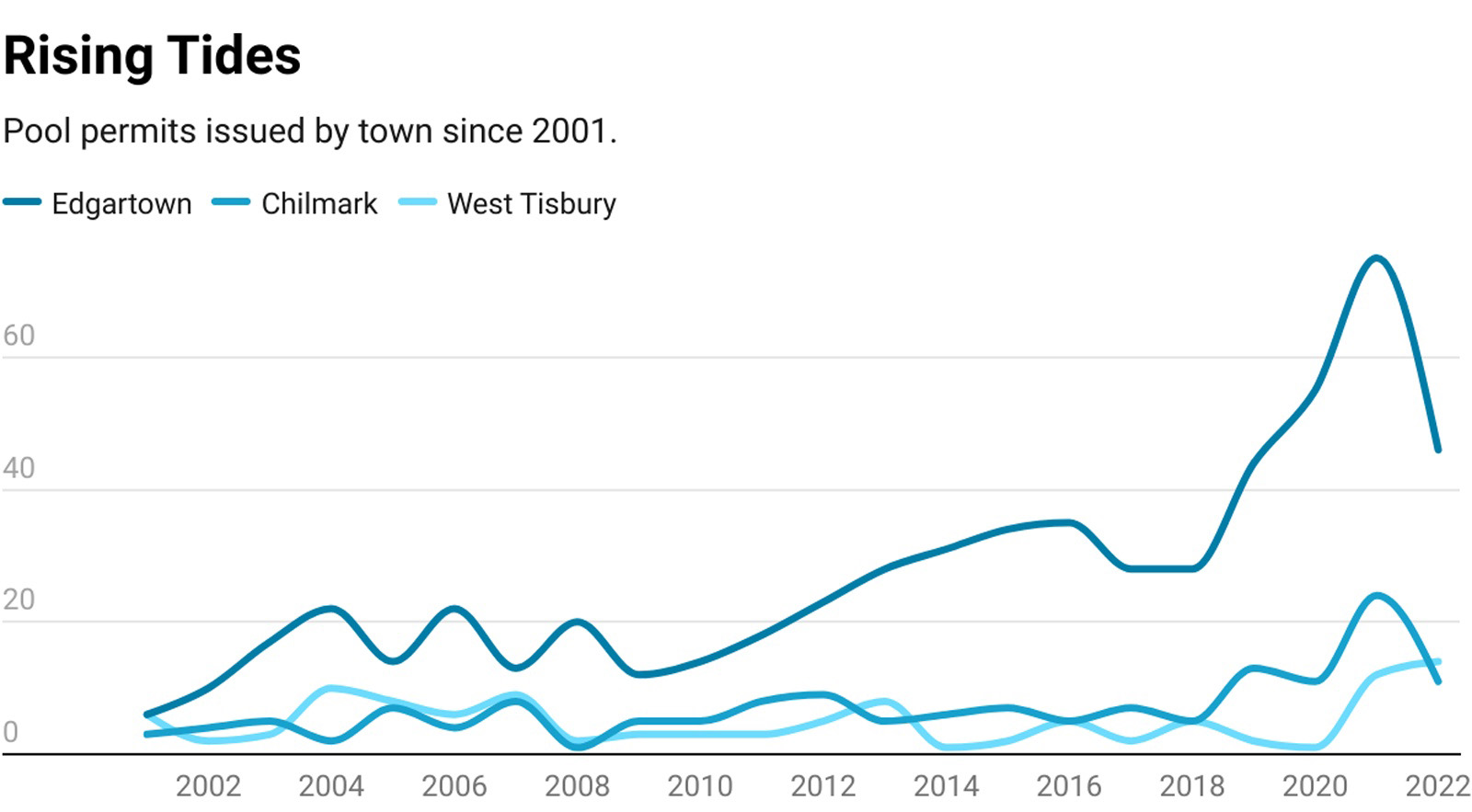Once a rare luxury, swimming pools on Martha’s Vineyard have burgeoned in popularity, driven in part by demand from the summer rental market for more amenities.
Over the past two decades, more than 750 pool permits were awarded in Edgartown and Chilmark alone. Historical data from other Island towns is incomplete, but suggests a more modest uptick in pool construction.
In Edgartown, the rate of pool building hit a high of 75 in 2021. In 2022, there were 46 pool permits awarded, still a nearly eightfold increase from 2001, when just six pools were approved.
Eleven pool permits were approved in Chilmark last year, down from its height of 24 in 2021. In 2001, just three pools were approved in Chilmark.
Local officials and activists said they are trying to reckon with this growth, grappling with how to handle an increasingly profitable aspect of the changing face of the Island economy.
“In extreme cases like Edgartown, the reality is that when you put in a pool, the rental cost almost doubles,” said Island realtor Jim Feiner of the impetus behind the trend. “For people who are investors, when you put a pool into a house you can sell it for a lot more money.”
Once considered superfluous on an Island surrounded by ocean and dotted with ponds, private pools have become increasingly desirable for vacationers.
“When I built my first house in ’98, it was considered gauche to have a pool,” said Point B Realty managing director Wendy Harman. “I think that the vacation home has morphed into the new hotel, and people want more hotel-like amenities.”
Historical data on pool permits was not consistently gathered in Tisbury and Oak Bluffs annual reports, but Ms. Harman said she had not seen the same pressure to build pools in those towns.
“I think [Oak Bluffs and Tisbury] are about where Edgartown was 10 years ago,” she said. Since 2018, when pool permits began to be independently listed in Tisbury annual reports, 25 pool permits have been approved, well below the numbers in Edgartown and Chilmark.
West Tisbury has also seen some growth in pool building, with 12 permits recorded in 2021 and 14 in 2022, both record highs. Pool permiting trends have been more variable in West Tisbury, which had its previous peak with 10 permits awarded in 2004; 112 pools permits have been awarded there since 2001.
Historically, Ms. Harmon said, there were never more than three pool contractors on Island. That number has now doubled, joining a half-dozen pool maintenance companies.
For Christian Miller, owner of construction and landscaping company Millers Professionals, getting into the pool business was at first a pragmatic move.
“I couldn’t even get people to return my calls when my customers wanted a pool,” he said, referencing the high demand for pools and low supply of workers. Since he jumped into the pool business in 2019, Mr. Miller estimates his company has built more than 150 pools on-Island, which he largely attributes to a high return on investment.
“Clients put them in and they can pay off the project in a season, maybe two seasons, of renting,” he explained.
Millers’ pools typically cost between $50,000 to $100,000; higher-end projects can start at $300,000.
But for Vineyard Conservation Society director Samantha Look, the proliferation of swimming pools represents a worrying change in Island culture.
“In a strange twist of irony, that natural beauty that attracted many folks here to begin with is often replaced by the development that comes with a real estate transaction,” she said.
At the root of the trend, Ms. Look said, is the increasing profitability of the Island real estate business.
“I think somewhere along the way...Vineyard property ownership became increasingly driven by investment opportunity,” she wrote in a follow-up statement to the Gazette. “If one of the primary motivations is what can be taken away from the land in terms of monetary value, rather than being drawn here out of love for the place in its own right, I fear for the dynamic that sets up and the future it paints.”
In addition to the impact on natural land, Ms. Look raised concerns about the impact on fossil fuels from heating pools, while Mr. Feiner worried that filling pools might have an undue impact on the Island’s aquifer.
But even if there is some appetite to regulate pools, local officials often find themselves running up against statutory limits. Joan Malkin, a member of the Chilmark zoning board of appeals who has long been involved in efforts to update the town’s zoning bylaws on pools, said even efforts to enhance safety regulations were thwarted at the state level.
“There’s nothing we can do. Our hands are tied,” Ms. Malkin said.
Ms. Malkin said she began work on revisions to the pool bylaw back in 2018, with hopes of enhancing required safety precautions. The bylaw was passed at town meeting that year, but was struck down by then-attorney general Maura Healey, citing the fact towns were not allowed to enact regulations superseding the state Board of Building and Regulation Standards.
A revised version of the pool bylaw updates, passed at Chilmark town meeting this year, largely leaned on pool safety restrictions allowable in the International Swimming Pool and Spa Code.
“As a matter of philosophy, I think the majority of board members were not content with what the pool code requires,” Ms. Malkin said.
Still, pool regulations in Chilmark remain among the most stringent. All prospective pool builders require a special permit from the zoning board of appeals, fulfilling a number of safety and screening requirements, and must be town residents for at least two years before building a pool.
Edgartown, in contrast, only requires a zoning board of appeals hearing for pools on nonconforming lots less than 10,000 square feet, while requiring planning board approval for pools in the coastal district. Edgartown zoning board of appeals chair Martin V. (Skip) Tomassian Jr. declined to be interviewed for this article.
The heights of pool building subsided somewhat last year but are still trending upwards.
For Ms. Look, this represents a move towards suburbanization of the Island and is a trend worth fighting.
“As a community, we have to decide, are we concerned or are we fine to let it go in this direction?” she said. “Or do we want to put a stake in the ground and ask things to change?”









Comments (49)
Comments
Comment policy »